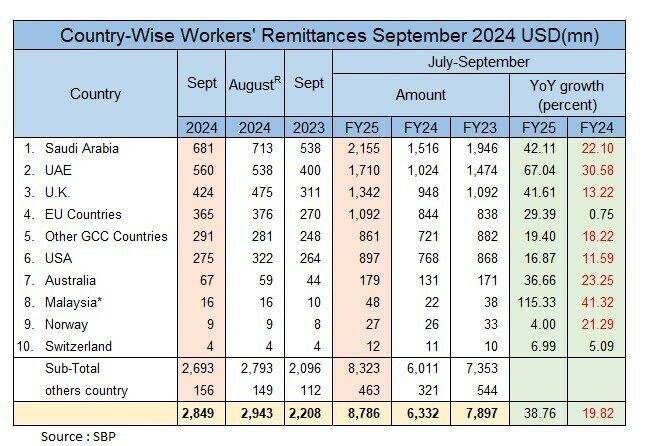EDITORIAL:
As the waters of the 2022 floods recede, the aftermath of the natural disaster continues to linger, particularly in the form of malnourishment among the most vulnerable victims: children. The United Nations has recently released alarming data indicating a significant increase in the number of malnourished children in the areas affected by the floods. Shockingly, malnourishment was already a prevalent issue even before the floods, but now it has reached crisis levels. The UN survey reveals that one-third of children between the ages of six to 23 months are suffering from moderate acute malnutrition, while 14 percent of infants are exposed to acute severe malnutrition, which can be fatal.
According to UN officials, the situation is particularly dire in Sindh and Balochistan, where the flood devastation has exacerbated an already existing problem of child malnutrition. Before the floods, child wasting was already at an alarming level, but now the situation has worsened to “emergency levels”. The grim reality is that even before the floods hit, Pakistan was already struggling to combat the issue of child malnutrition. Unicef has described the situation as “quite dire”, with wasting heavily prevalent and around 10 million children suffering from stunting.
The consequences of child malnutrition are significant and long-lasting. Malnourished children are more vulnerable to illnesses and infections, and their physical and cognitive development is often stunted. They are also more likely to drop out of school and earn lower wages as adults, perpetuating a cycle of poverty. Therefore, it is imperative that Pakistan takes swift and effective action to address the issue of child malnutrition, particularly in the flood-affected areas.
To tackle this problem, Pakistan needs a comprehensive and coordinated approach that involves all stakeholders, including the government, civil society, and the private sector. First and foremost, the government needs to prioritize the issue of child malnutrition and allocate sufficient resources to address it. This includes investing in nutrition-sensitive interventions such as improving access to clean water, sanitation, and hygiene, promoting exclusive breastfeeding, and providing nutrient-rich food supplements. It is also crucial to ensure that children have access to quality health services that can provide timely diagnosis and treatment for malnutrition.
In addition to government action, civil society and the private sector can play a critical role in addressing child malnutrition. Civil society organizations can raise awareness about the issue and advocate for policies and programs that prioritize child nutrition. The private sector can also contribute by investing in nutrition-sensitive agriculture and food production, promoting the availability of affordable and nutritious food, and supporting nutrition education and awareness campaigns.
Moreover, it is essential to address the underlying causes of child malnutrition, which are often related to poverty, inequality, and social exclusion. This requires a multi-sect-oral approach that goes beyond just the health sector and involves education, social protection, and women’s empowerment. Addressing gender inequalities and promoting women’s rights is particularly important, as women often bear the brunt of poverty and are more likely to be malnourished themselves, leading to inter-generational malnutrition.
The devastating floods that hit Pakistan in 2022 have left a long-lasting impact on the country, especially on the vulnerable population, including children. The aftermath of the floods has led to an alarming increase in child malnourishment, which has already been a significant issue in the country. According to a survey conducted by the UN, the number of malnourished children in the flood-affected areas has surged, and one-third of youngsters between six to 23 months suffer from moderate acute malnutrition. The situation is dire in Sindh and Balochistan, where acute severe malnutrition, which can be deadly, affects 14% of infants.
The problem of child malnutrition in Pakistan is not new. UNICEF has termed the situation as “quite dire,” with wasting “heavily prevalent,” and approximately 10 million youngsters suffering from stunting. However, the floods have worsened the situation, and emergency levels of malnourishment are being observed. The impact of malnutrition on children’s health can be irreversible, which makes it crucial for the state to address this issue urgently.
The UN has allocated $5.5 million for food security interventions, but more funds are required to meet the nutritional needs of vulnerable children. Although the economy is in a tailspin, and donor inflows are affected due to global economic conditions, the state must prioritize funds for children’s and adults’ nutrition in flood-affected areas. Non-essential expenses can be cut, and funds can be channelized towards providing adequate food to the affected population. As the holy month of Ramazan comes to an end, zakat funds and other charitable contributions can also be used to address the immediate nutritional needs of children.
Acquire our monthly magazines in English and Urdu language by accessing the Daraz Application link below.
https://www.daraz.pk/shop/3lyw0kmd
The issue of child malnutrition in Pakistan is not only a humanitarian concern but also an economic one. Malnutrition affects a child’s cognitive development, leading to poor academic performance, which affects their future employment prospects. Malnourished adults are also less productive and prone to illness, which has a detrimental effect on the economy.
One way to address child malnutrition is through education and awareness campaigns. Parents and caregivers must understand the importance of a balanced and nutritious diet, and the harmful effects of malnutrition on children’s health. The government can also introduce policies that promote access to affordable and nutritious food, such as subsidizing food items or providing incentives to food manufacturers to produce healthier food products.
Another way to address child malnutrition is through the provision of food supplements. The World Food Programme (WFP) has been providing food assistance to flood-affected areas in Pakistan, which includes high-energy biscuits and fortified food supplements. Such interventions can make a significant difference in the nutritional status of vulnerable children, especially during emergencies.
However, it is crucial to ensure that these interventions are sustainable and do not create dependency. The state must focus on building the resilience of communities and strengthening their capacity to withstand future shocks. This can be done by investing in agriculture, promoting livelihood opportunities, and building disaster-resilient infrastructure.
In conclusion, child malnutrition is a grave issue in Pakistan that requires urgent attention. The state must prioritize the nutritional needs of vulnerable children and allocate resources accordingly. The impact of malnutrition on children’s health is irreversible, which makes it crucial to address this issue urgently. Education and awareness campaigns, the provision of food supplements, and building community resilience can help address child malnutrition in the long run.
Read more:

















































